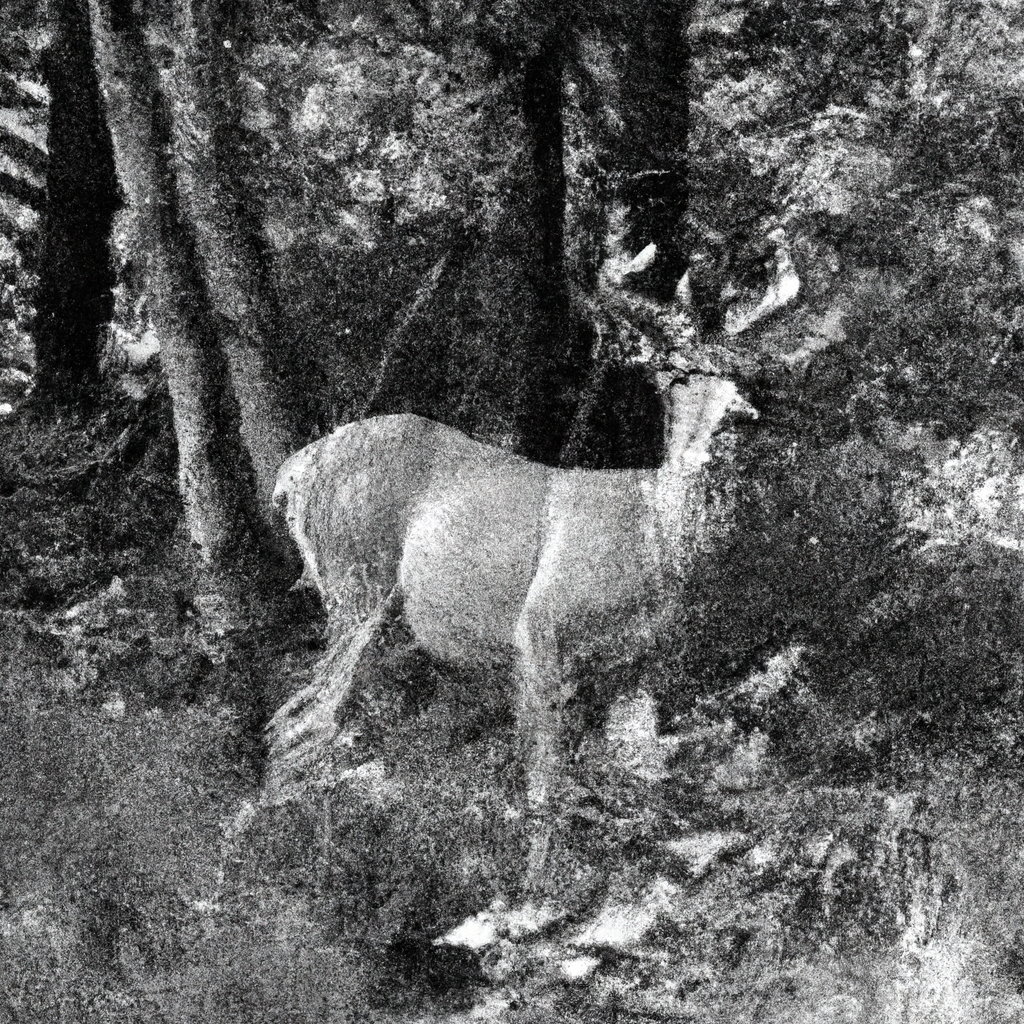So, you’re all set for your camping adventure, ready to immerse yourself in nature and disconnect from the hustle and bustle of everyday life. But, as much as we adore the wonders of wildlife, encounters with them can sometimes catch us off guard. The question arises: what should you do if you come face to face with a wild creature while camping? Well, fear not! In this article, we’ll provide you with some handy tips and guidelines on how to handle these encounters in a safe and respectful manner.
Identify the Wildlife
Stay Calm and Observe
If you encounter wildlife while camping, the first thing you should do is stay calm. It can be an exhilarating experience, but it’s important to remember that wild animals are just that – wild. Take a deep breath and try to observe the animal from a safe distance. Look for any distinguishing features that can help you identify what species it belongs to.
Keep a Safe Distance
While it may be tempting to get a closer look, it’s crucial to keep a safe distance from any wildlife you encounter. Remember, these creatures have their own territory and their behavior can be unpredictable. Approaching them can provoke defensive or aggressive responses. So, keep your distance and use binoculars or a zoom lens to get a better view if needed.
Learn about Local Wildlife
Before heading out to a camping trip, it’s wise to educate yourself about the local wildlife. Each region may have its own unique species, and understanding their behaviors and habits can help you better navigate any encounters. Take the time to research the types of animals that may be present in the area and learn about their typical behaviors. Local authorities or park rangers can be excellent resources for this information.
Secure Your Campsite
Store Food Properly
One of the most important ways to secure your campsite is by properly storing your food. Wildlife has a keen sense of smell and are often attracted to the smell of food. Utilize bear-resistant containers or hang your food in a bear bag from a sturdy tree branch. This will help to deter animals from approaching your campsite in search of a tasty treat.
Dispose of Garbage Correctly
Garbage can attract wildlife just as much as food can. Make sure to dispose of your garbage in designated animal-proof containers. If such containers are unavailable, store your trash securely and away from your campsite. The less odor your garbage emits, the less likely it is to attract curious animals.
Keep Tent Zipped
When camping in areas with wildlife, it’s essential to keep your tent zipped at all times. This not only prevents animals from entering and rummaging through your belongings but also provides you with security while you sleep. By keeping your tent closed, you reduce the chance of any unexpected encounters during the night.

Interacting with Wildlife
Don’t Feed or Approach
Feeding wildlife may seem like a kind gesture, but it can have serious consequences for both the animals and humans. Feeding wildlife disrupts their natural foraging behavior and can lead to them becoming reliant on humans for food. Additionally, approaching wildlife puts you at risk of potential injury. It’s crucial to respect their space and allow them to live undisturbed.
Do Not Litter
Littering is harmful to the environment and can also have a negative impact on wildlife. Animals may mistake garbage for food or become entangled in trash, leading to injuries or even death. Always pack out what you pack in and dispose of your garbage properly so as not to contribute to the pollution of their habitat.
Avoid Sudden Movements or Loud Noises
When encountering wildlife, it’s important to remain calm and avoid sudden movements or loud noises. Sudden gestures or loud sounds can startle animals and may provoke them into defensive behaviors. By staying quiet and maintaining a gentle demeanor, you reduce the risk of escalating the situation and ensure the safety of both parties.
Protecting Yourself and the Wildlife
Carry Bear Spray or Pepper Spray
Carrying bear spray or pepper spray is a sensible precaution when camping in areas known to have bears or other potentially dangerous wildlife. These sprays can serve as effective deterrents if you find yourself in a close encounter with an animal. However, it’s important to learn how to use them correctly and understand their limitations.
Make Noise to Alert Animals
One of the best ways to avoid surprises and minimize the chance of close encounters is to make noise while you’re hiking or walking through the wilderness. By clapping your hands, talking loudly, or singing, you alert animals to your presence. Most wildlife will instinctively avoid humans if they are aware of their approach.
Keep Children and Pets Nearby
If you’re camping with children or pets, it’s essential to keep them close and under your supervision. Children should be educated about the proper behavior around wildlife, such as not approaching or trying to touch them. Keeping pets on a leash also ensures their safety and prevents them from chasing or disturbing the local wildlife.

Dealing with Bears
Stay Calm and Avoid Eye Contact
If you encounter a bear, it’s crucial to stay calm and avoid making eye contact. Bears interpret direct eye contact as a sign of aggression, so it’s best to avert your gaze. Keep your body facing the bear to show that you are aware of its presence.
Slowly Back Away
It’s important not to turn your back on a bear or to run away. Instead, back away slowly while keeping an eye on the bear. Moving too quickly may trigger the bear’s predatory instincts, leading to a potential chase. Create distance between you and the bear while maintaining a calm and confident demeanor.
Raise Your Arms to Appear Larger
If a bear begins to approach, try to make yourself appear larger by raising your arms and spreading your jacket or backpack wide. This can help to intimidate the bear and potentially deter it from getting closer. Additionally, speaking loudly and in a firm tone may also help to assert your presence.
Handling Snakes
Back Away Slowly
If you come across a snake, it’s essential to stay calm and back away slowly. Snakes are generally more afraid of humans than vice versa. Giving them space to retreat ensures that you both remain safe. Make slow, deliberate movements, and avoid sudden actions that may startle the snake.
Do Not Try to Handle or Kill
Even if you encounter a venomous snake, it’s important never to attempt to handle or kill it. Attempting to capture or kill a snake not only increases the risk of getting bitten but also harms the delicate balance of the ecosystem. Remember that snakes play an integral role in controlling rodent populations and maintaining the overall health of the environment.
Call for Professional Help if Bitten
In the unfortunate event that you or someone else gets bitten by a snake, it’s crucial to seek professional help immediately. Do not attempt to treat the bite yourself or apply any home remedies. Call emergency services or contact a local poison control center to receive proper medical advice and assistance.
Encountering Cougars or Mountain Lions
Maintain Eye Contact
If you encounter a cougar or mountain lion, it’s important to maintain eye contact while slowly backing away. Direct eye contact sends a clear signal that you have seen the animal and are not prey. This can help to deter the animal from approaching or attacking you.
Appear Larger
To further assert your presence and deter a cougar or mountain lion, make yourself appear larger. Raise your arms, open your jacket, and stand tall. By doing so, you make yourself a less appealing target and increase the chances of the animal choosing to retreat.
Back Away Slowly
While maintaining eye contact and appearing larger, back away slowly without turning your back on the animal. Retreating in a calm manner communicates to the cougar or mountain lion that you are not a threat. Avoid sudden movements or running, which may trigger the predator’s instinct to chase.
Managing Interaction with Coyotes
Make Yourself Look Big
If you encounter a coyote, it’s important to make yourself appear big and imposing. Stand tall, raise your arms, and spread your jacket to make yourself look larger than you actually are. This can help to discourage the coyote from approaching closer.
Shout and Wave Arms
To further deter a coyote, shout loudly and wave your arms. Making noise and exhibiting assertive behavior can intimidate the animal, causing it to retreat. The goal is to make the coyote realize that you are not an easy target and to discourage any potential aggression.
Throw Objects Near but Not at Them
If a coyote continues to approach despite your efforts, you can throw objects near it to create a deterrent. Tossing rocks or sticks will startle the animal without causing harm, reinforcing the notion that humans are not prey. However, avoid throwing directly at the coyote, as this can be seen as an act of aggression.
Dealing with Moose
Keep Your Distance
Moose may appear docile, but they are large and can be unpredictable. It’s important to keep a safe distance and avoid approaching them. Give moose plenty of space and remember to be respectful of their territory.
Do Not Approach Calves
When encountering moose, it’s crucial to keep an even greater distance if there are calves around. Mother moose are fiercely protective of their young, and approaching them can be perceived as a threat. Maintain a minimum of 50 yards (45 meters) from moose with calves to ensure the safety of both you and the animals.
Move Away Slowly and Calmly
If you find yourself in close proximity to a moose, it’s important to move away slowly and calmly. Do not turn your back on the moose or run, as this may trigger aggressive behavior. Keep your body facing the moose and create distance without making sudden movements.
Encountering Other Wildlife
Research Their Behavior
Encountering wildlife while camping can be exciting, but it’s necessary to research their behavior beforehand. Each species has its own set of behaviors and specific needs. Understanding the wildlife you may encounter can help ensure a positive and safe experience for both you and the animals.
Follow Park or Campground Guidelines
When camping in designated parks or campgrounds, it’s crucial to follow their guidelines regarding wildlife encounters. Use designated trails, observe any posted warning signs, and follow the instructions provided by park rangers. These guidelines are in place to protect both you and the wildlife.
Contact Local Authorities if Necessary
If you encounter wildlife and feel unsafe or unsure of how to handle the situation, contact local authorities for guidance. Park rangers or local wildlife officials are trained in handling these scenarios and can provide valuable advice and assistance. They can also document any unusual wildlife behavior or sightings that may be helpful for future management and conservation efforts.
By following these guidelines and respecting the wildlife you encounter while camping, you can create a harmonious coexistence with nature. Remember, observing wildlife from a safe distance and allowing them to maintain their natural behaviors is not only in their best interest but also ensures your own safety. Enjoy the beauty of the wilderness and help preserve it for generations to come. Happy camping!

